SimLab: The Future of the Automotive Industry
3 May 2021
Introducing the Driving Simulator
Ours is Different
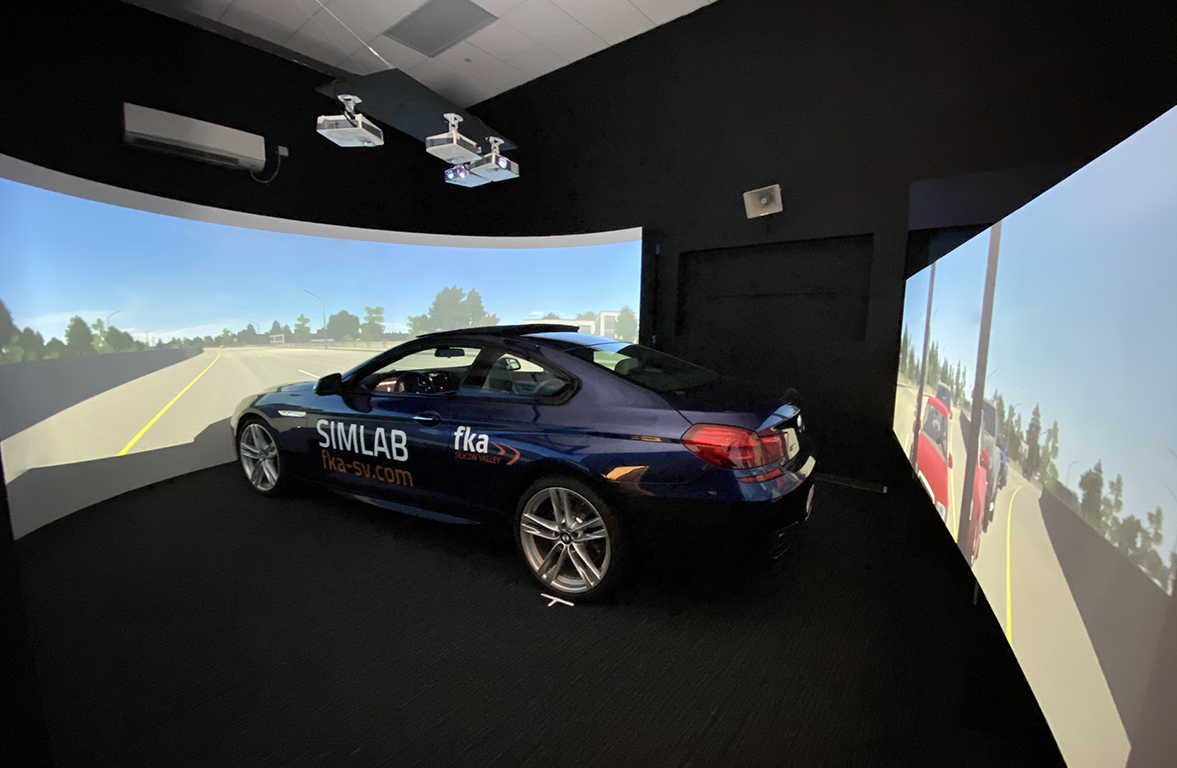
Specs
The Look and Feel
As mentioned, our Silicon Valley simulator is a complete vehicle, which creates a stronger immersion. The vehicle interior is fully functional with two programmable displays (center console and instrument cluster), additionally, the Interior can be customized to fit additional equipment or displays. Our static simulator (no simulated motion) is surrounded by a 220-degree, curved frontal projection, which spans the peripheral vision. A three-way split rear projection for true perspective in mirrors is available while implementing Virtual Test Drive by Vires as the simulation engine. Also, we offer the ability to actively influence the surrounding traffic behavior as well as weather conditions, time of day, different style roads in different countries, and any type of track, etc.
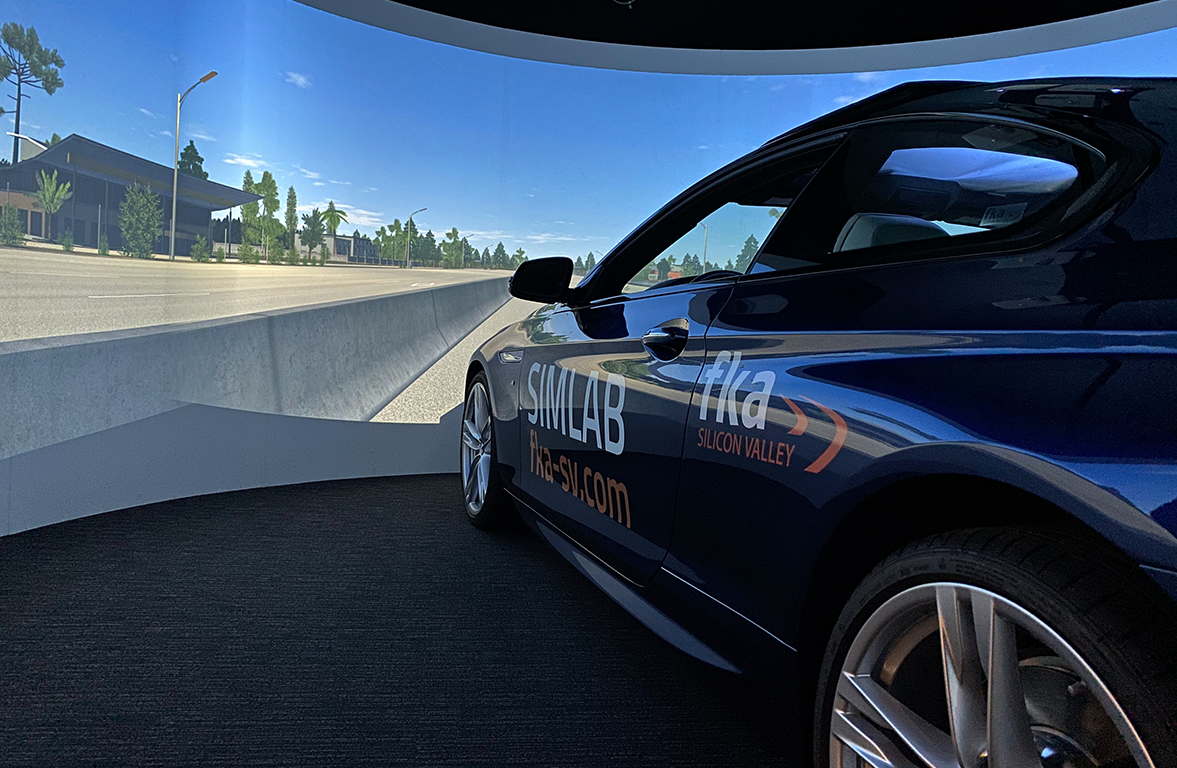
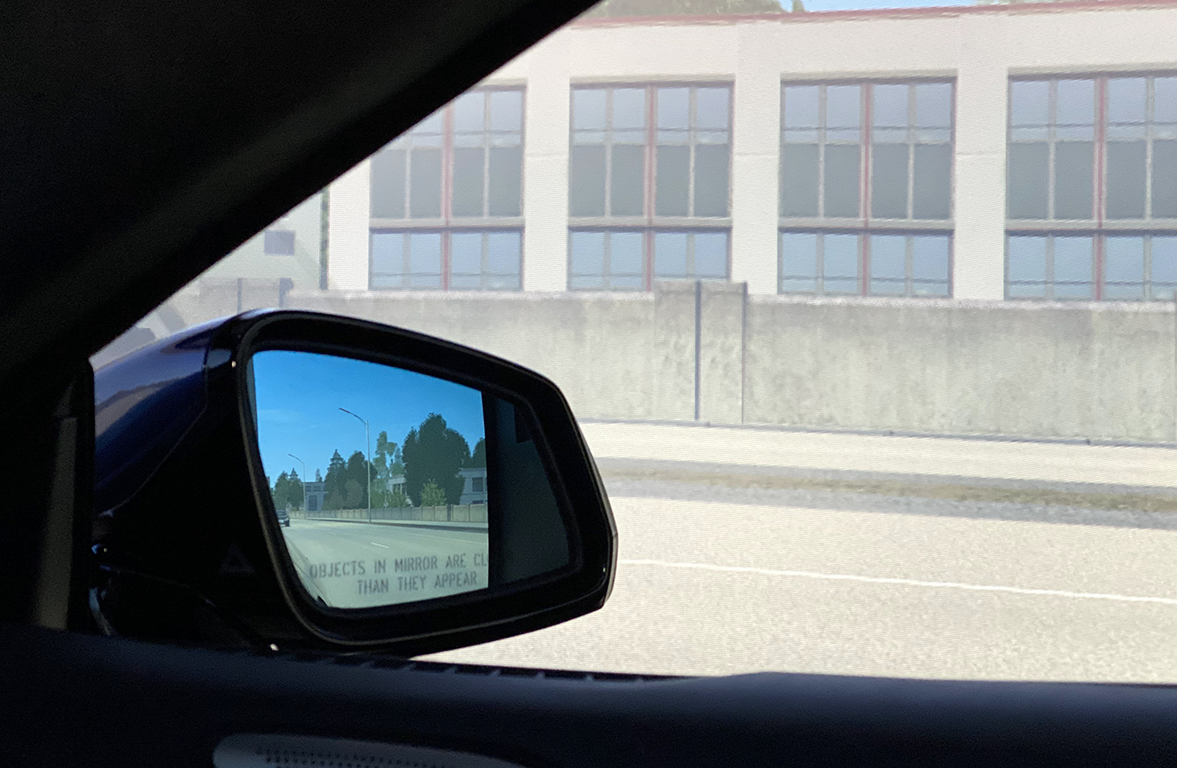
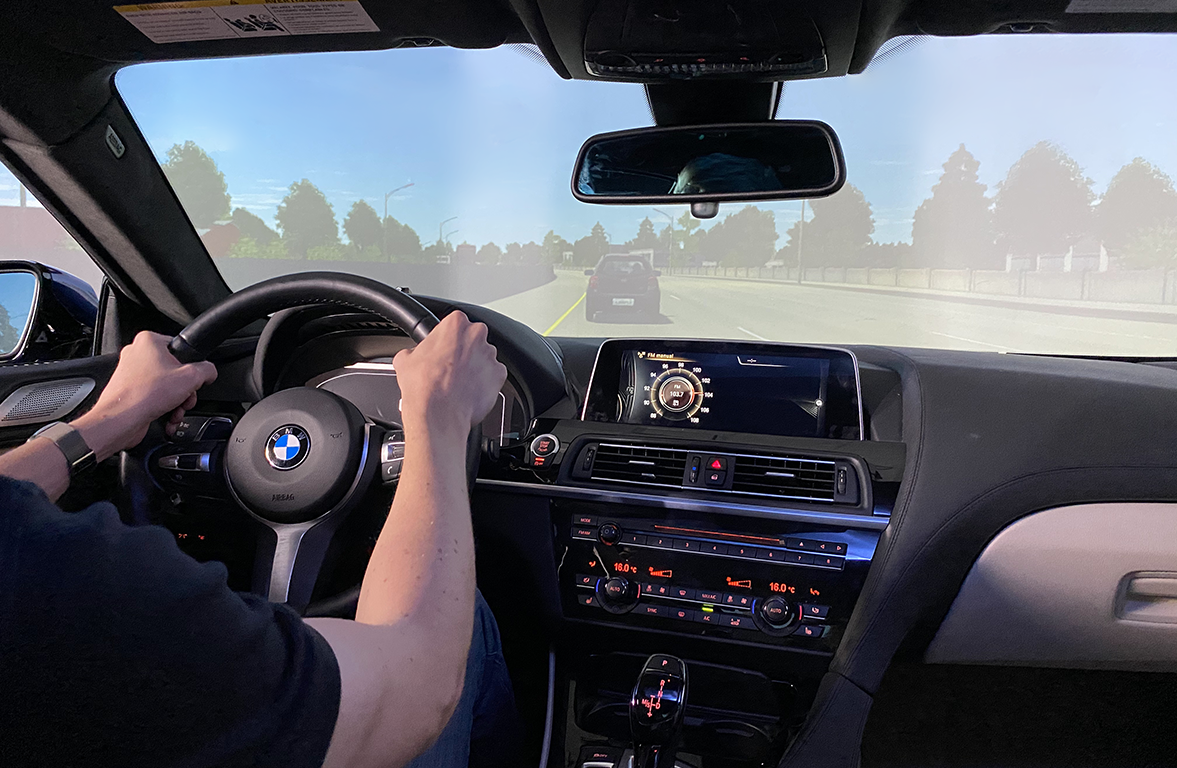
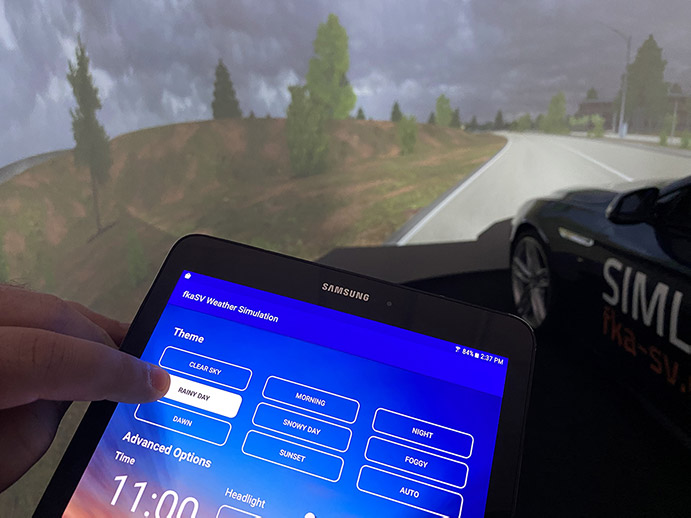
The simulator's vehicle controls range from a force feedback steering wheel (capturing the road resistance), a true-feel brake pedal (mimicking the behavior of a hydraulically-operated brake pedal), and an accelerator with "kick down" (gas-by-wire, completely digital accelerator pedal) and lastly, all features can be swapped out to accommodate your hardware or customized to your needs. This includes but is not limited to any interior button to alter the vehicle behavior or the displayed contents on the screens, indicators, lights, mirror controls, and electric seat controls all work like it would a real car.
Performance indicators and measurable parametersWe measure any button press, driver input, vehicle simulation parameter (especially the position in the virtual environment and distances to lane markings) as well as any surrounding vehicle positions and speeds. This also includes lane exceedances (when a vehicle leaves its designated lane without purpose), the ego vehicle speed, time headway, steering angle, and pedal positions (gas and brake), and lastly custom metrics to fit your special purposes. Additional measurable parameters are possible, such as gaze tracking (head-mounted or dashboard-mounted), and the Detection Response Task (DRT, a frequently used method in measuring mental workload), both tactile and visible. Further measures are taken through questionnaires administered by experienced study executors (e.g. usefulness of system, usability, frustration, NASA TLX).
Testing GuidelinesOur first-rate lab is fully customizable to your needs, however, if you require to test in your own lab, we can offer support in the design, build and set up of a mobile lab. Our support includes the following training of your staff, building custom software and hardware solutions for your specific needs, building concepts, and trade show setups, including custom concepts and hardware. Examples of such a service can be seen from three years at CES: ZF’s concept 2020, ZF’s Safe Human Interaction Cockpit, BCS’s Surf’n’Curve including custom concepts and hardware like the self-driving car exhibit at the Living Computer Museum in Seattle.

